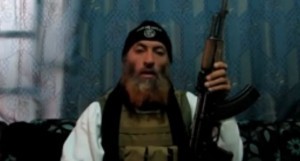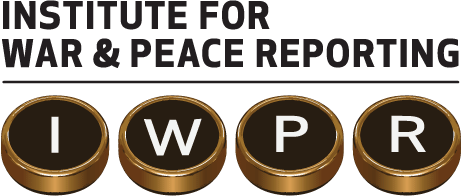Al-Nusra Front – The Face of Al-Qaeda in Syria

A prominent development in the ongoing Syria conflict is the ascent of radical Islamists, both Syrian and foreign, who advocate a puritanical form of Islam and who are ready to use violence to impose and spread their views. Jihadist groups, such Al-Jabha al-Islamiyya and the Mujahideen Army, are currently waging a war of attrition against the Islamic State in Syria and Iraq (ISIS), an extension of Al-Qaeda in Iraq.

Today, Islamist groups have proliferated in Syria. The first of these groups to emerge in the conflict was Jabhat Al-Nusra Li Ahl Al-Sham, which translates roughly into the Support Front for the People of Sham, and known by the shorthand version of its name, Jabhat al-Nusra, which is now coming into its second year.
On January 24, 2012, media outlets and social media sites broadcast a video message by Al-Nusra Front leader Abu Mohammad al-Joulani, known as Al-Fateh, in which he announced the formation of Jabhat Al-Nusra. The video was broadcast by the White Lighthouse Foundation for Media Production, the media wing of the organization, as well as by well-known jihadist websites such as the Al-Qaeda affiliated Shomoukh Al-Islam. Joulani’s message, entitled “Syrian Jihad”, called on Syrians to undertake armed jihad against the Syrian regime and announced that Al-Nusra Front’s goal was to “return the rule of God to his land.”
Initially, the opposition paid little attention to the video and ignored its jihadist language in an effort to preserve the non-violent and civilian nature of the movement. They stressed the notions of freedom, dignity, and non-sectarianism and rejected Islamic and sectarian language. However, a debate soon erupted around Al-Nusra Front’s identity and the real reasons behind its involvement. Opinions varied, and some even doubted its very existence. Even Islamists such as Sheikh Abu Baseer al-Tartousi, a noted Syrian Salafi thinker, expressed doubts about the organization and considered the possibility that the regime itself was behind its establishment.
On February 10, several suicide attacks targeted security bases in Aleppo. Two weeks later on February 26, Al-Nusra Front claimed responsibility in a second announcement through the White Lighthouse Foundation, entitled “the revenge of the free people of Syria.”
After successive operations claimed by Al-Nusra Front against vital regime targets such as military and security bases in Damascus and other provinces, it emerged as one of the most effective armed opposition groups fighting against the regime, particularly as the peaceful protest movement was overshadowed by an increasingly militarized opposition. Its influence spread as more protestors began to take up arms and religious discourse in their struggle.
In a record amount of time, Al-Nusra Front demonstrated a great deal of organizational and logistical capacity and effectiveness on the ground. In certain areas, its presence overshadowed the work of the Free Syrian Army, despite the latter’s earlier establishment and adoption by the opposition and the countries that support it. Strategically, Al-Nusra Front’s operations concentrated on isolating, attacking, and taking control of military outposts of the regime to ensure self-sufficiency in the provision of weapons without having to rely exclusively on external armament, as the Free Syrian Army does. It also attempts to control supply routes in order to pressure other battalions to join its ranks.
Al-Nusra Front thus accumulated practical “jihadist” experience. It came to be described as an extension of Al-Qaeda in Iraq, or that at the very least it receives direct support from it. “Around 5,000 fighters from Al-Nusra Front originally belonged to Abu Mas’ab al-Zarqawi’s network, currently headed by Abu Bakr al-Baghdadi,” according to the Quilliam Foundation, a British organization dedicated to researching extremism.
The methods employed by Al-Nusra Front and Al-Qaeda in Iraq, known as the Islamic State of Iraq, are similar: explosive devices targeting military vehicles, booby trapped cars driven by suicide bombers, and the filming of operations and broadcasting of video messages. Quranic verses and religious chants do not differ between the two organizations. With more evidence emerging of links between the two, the United States government added Al-Nusra Front to its list of terrorist organizations in December 2012. Al-Joulani then warned Syrians against replacing the Syrian regime with a Western one. “The fruits of revolution are only harvested by their cultivators,” he said.
Al-Nusra Front found popular opposition from several local communities where it attempted to impose its extreme version of religious doctrine, despite distributing food supplies and offering services, such as repairing electricity and water networks. In December 2012, clashes erupted in the Bustan Al-Qasr neighbourhood in Aleppo between protestors and Al-Nusra Front, as well as in Saraqeb in the province of Idlib suburbs, Ghouta and Raqqa in February 2013.
On April 9, 2013, “The Prince of the Islamic State of Iraq,” Abu Bakr al-Baghdadi, released a statement that changed the direction of Al-Nusra Front and rearranged the jihadist / Al-Qaeda scene in Syria.
“It is time for us to announce in front of all Syrians and the world, that Al-Nusra Front is nothing more than an extension of the Islamic State of Iraq,” he said.
Baghdadi decided to merge the two organizations into one under his leadership under the name of the Islamic State in Syria and Iraq.
The leader of Al-Nusra Front rejected Baghdadi’s statement and denied that he was consulted or that he knew anything about it. In response, Joulani announced his allegiance to the leader of Al-Qaeda, Ayman al-Zawahiri, and insisted that his men continue the battle under the banner of Al-Nusra Front. Most Syrian members of the organization remained loyal to him, but the majority of foreign fighters joined Baghdadi.
Zawahiri then intervened to end the dispute. He decided to terminate ISIS and restrict it only to the Islamic State of Iraq, while Jabhat al-Nusra would remain an autonomous branch of Al-Qaeda that follows its general command. He ordered the two groups to support each other and stop all attacks, whether verbal or physical, against the other. He also chided Baghdadi and Joulani for not consulting with him.
Zawahiri’s letter deepened the animosity between the two groups. Baghdadi continued with his project while his aide Abu Mohammad al-Adnani, speaking on behalf of the Islamic State, replied to Zawahiri in a letter dated June 20, 2013. He described Zawahiri’s decision as “wrong, inciting and divisive.” He also accused him of “reinforcing the Sykes-Picot borders,” and considered those who remained loyal to Joulani as apostates and traitors.
Al-Qaeda’s ideology in Syria is channelled through two competing groups, the first of which is ISIS under the leadership of Baghdadi, and the second is Al-Nusra Front, under the command of Joulani. The confrontation that erupted in January between ISIS and various Islamist groups will have a profound effect on determining who will ultimately come to represent Al-Qaeda in Syria.
